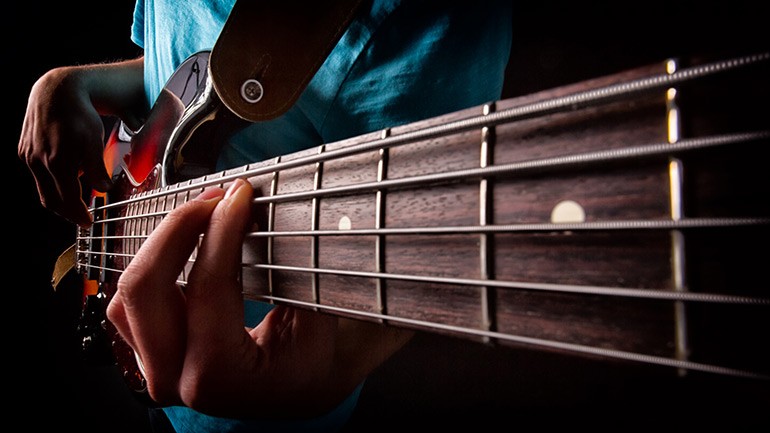Bottom Feeding: Best Practices for Recording & Mixing Bass
Techniques for properly recording and blending both electric and upright bass, including shaping the tone for maximum articulation, “locking” bass with the kick drum, avoiding muddy mixes, and more

For some demo makers, the bass isn’t much more than an afterthought, a bit of low-end plunking that merely cushions all the good stuff above. However, more discerning folks understand the importance of having a carefully crafted, melodic bass line, and that becoming expert at constructing a song’s lower level is another one of those adventures in lifelong learning.
To that end, here we have a look at some techniques for capturing and blending the elements that make up your demo’s foundation, including recording electric and upright bass, miking an amplifier versus using a direct patch (or both), sculpting bass tones for maximum articulation, and other thoughts.
Recording options. When considering the “best” way to record bass, you might want to start with the type of song you’re doing, including the kind of instrumentation that comprises the rhythm track. For instance, if the arrangement is fairly simple, you won’t need a lot of “lift” in order for the bass to be heard; by comparison, a track that has a lot of moving parts may require some extra effort to ensure the bass is loud enough but doesn’t flood the rhythm section with low end.
Many prefer the feel of an amplifier moving air, and for those folks miking the bass cabinet is the only way to go. Some of the same rules as recording a guitar amp apply here—for instance, pointing the microphone directly at the bass cab’s speaker cone will produce a brighter, more direct sound, while gradually moving the mic towards the outer rim of the speaker (or “off-axis”) will result in a rounder tone. Unlike electric guitar, you’ll want to keep some distance between the mic and the bass amp, or around six inches minimum, in order to avoid having too much bass frequency. A large diaphragm condenser mic can do a decent job, but dynamics are suitable as well, particularly those with greater low-frequency response. Use headphones to check the sound as you gradually move the mic around the speaker; even a few inches one way or the other can make a noticeable difference in tone and attack.
Like any acoustic instrument, recording an unamplified upright bass means getting close enough to hear the articulation of the player’s fingers (again, using a large-diaphragm condenser for miking), but with enough space to allow optimal projection.
Going straight in. As one can imagine, even at low volume it’s exceedingly difficult to keep amplified bass from leaking into other instruments (or for that matter a nearby neighbor’s apartment). Accordingly, your best bet may be to plug the bass straight into your recorder, either using a basic interface or a direct-injection or “DI” box, which boosts as well as equalizes the instrument’s low-frequency signal. For that matter you could try using both direct and miked bass recorded to separate tracks, which allows you to combine the fullness of the amp sound with the extra articulation from the DI signal.
Getting the right sound. The role of the bass can change significantly from one song to another, and therefore you’ll want a sound that best matches the music you’re working on. While a lot of players prefer the tone and texture of brighter roundwound strings, genres like jazz, blues, Latin, reggae and basic rock tend to have a beefier, less imposing bass sound, making traditional flatwound strings arguably a better choice. Rather than constantly switching string formulations, you can make adjustments such as rolling off the high end on both guitar and amp or placing a cloth or other dampening material under the strings between the bridge and pickup, in order to reduce the attack and brightness when using roundwounds, for instance.
Mixing bass. When mixing, bring up all the other instruments, then gradually raise the bass until it properly supports the rhythm section without calling undue attention to itself. When set correctly, the kick drum should be clearly audible above the bass, and both instruments should be “locked” to the same rhythmic pattern throughout. If need be, use equalization to adjust the tone and articulation of the bass track to achieve the right blend.






Community
Connect with BMI & Professional Songwriters